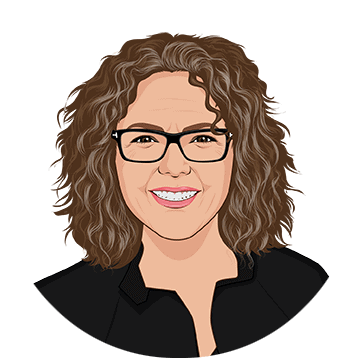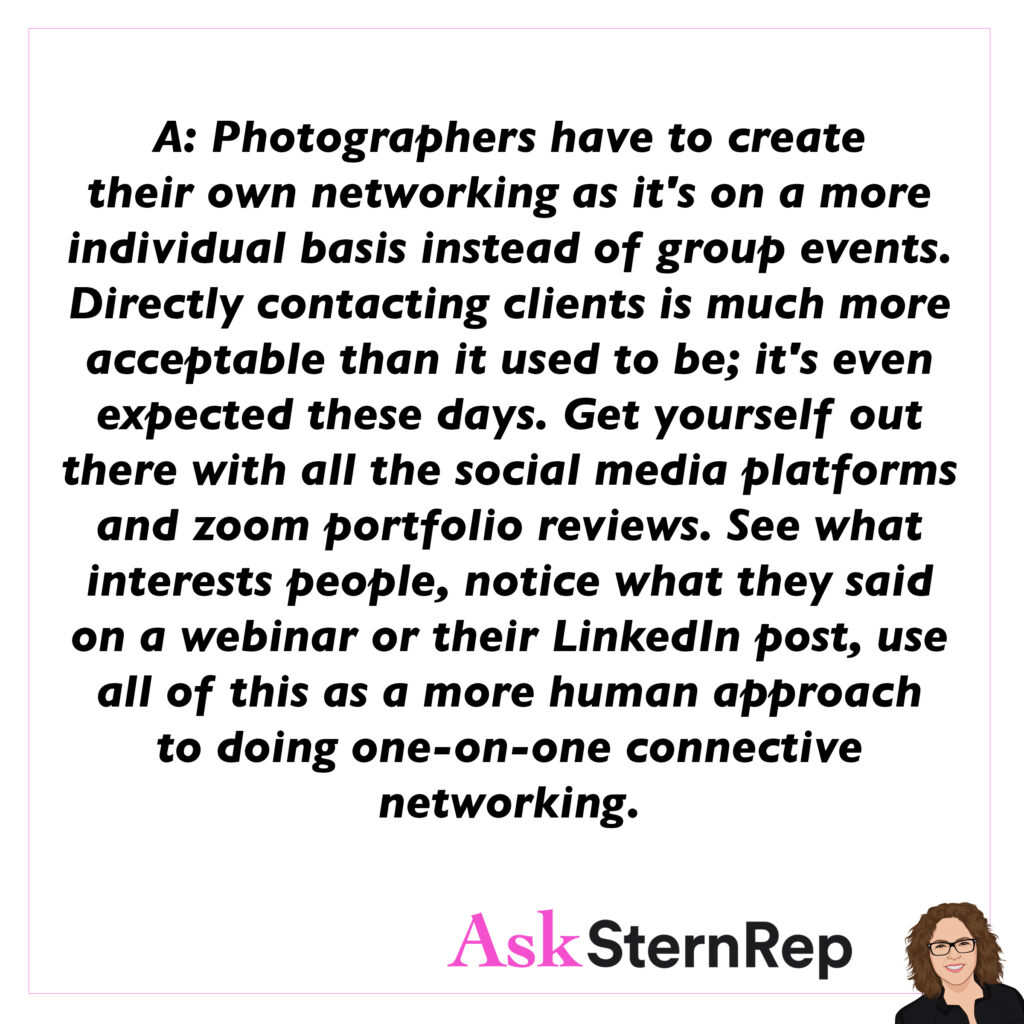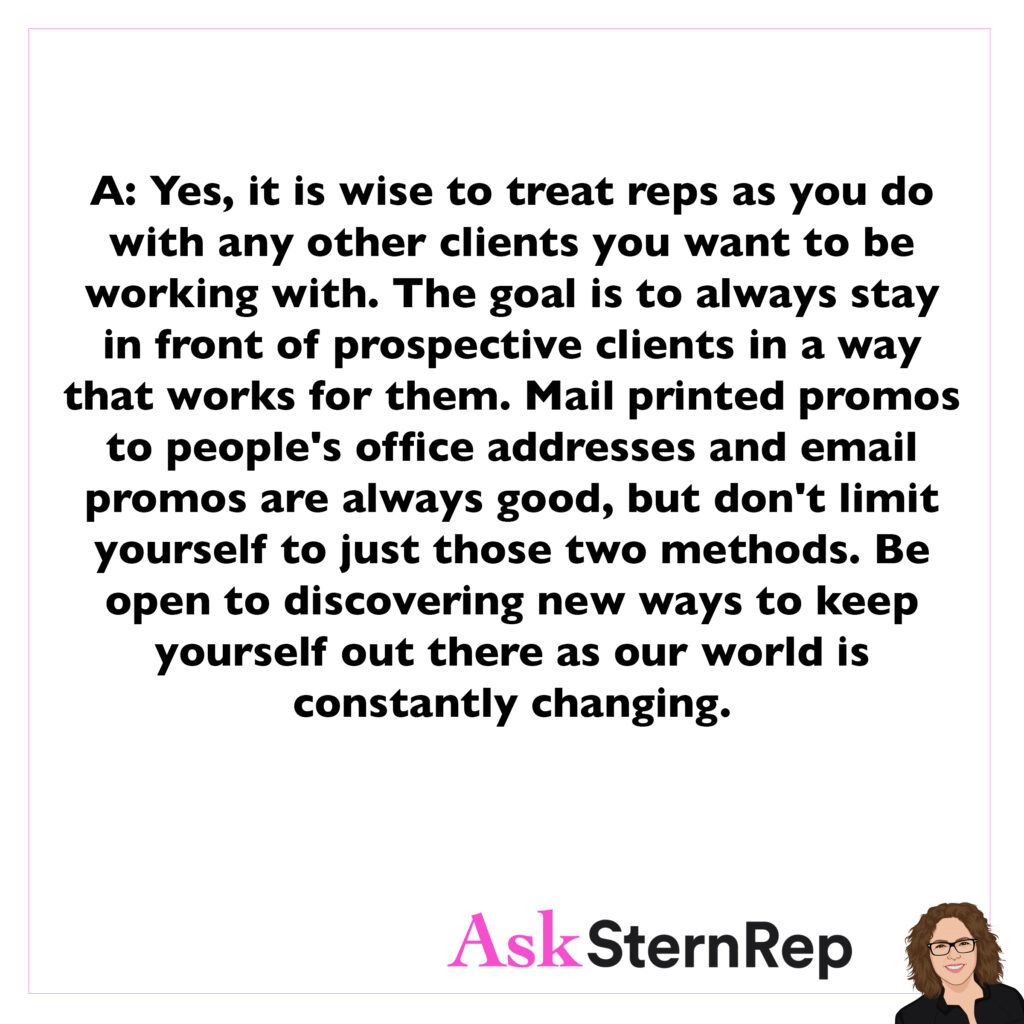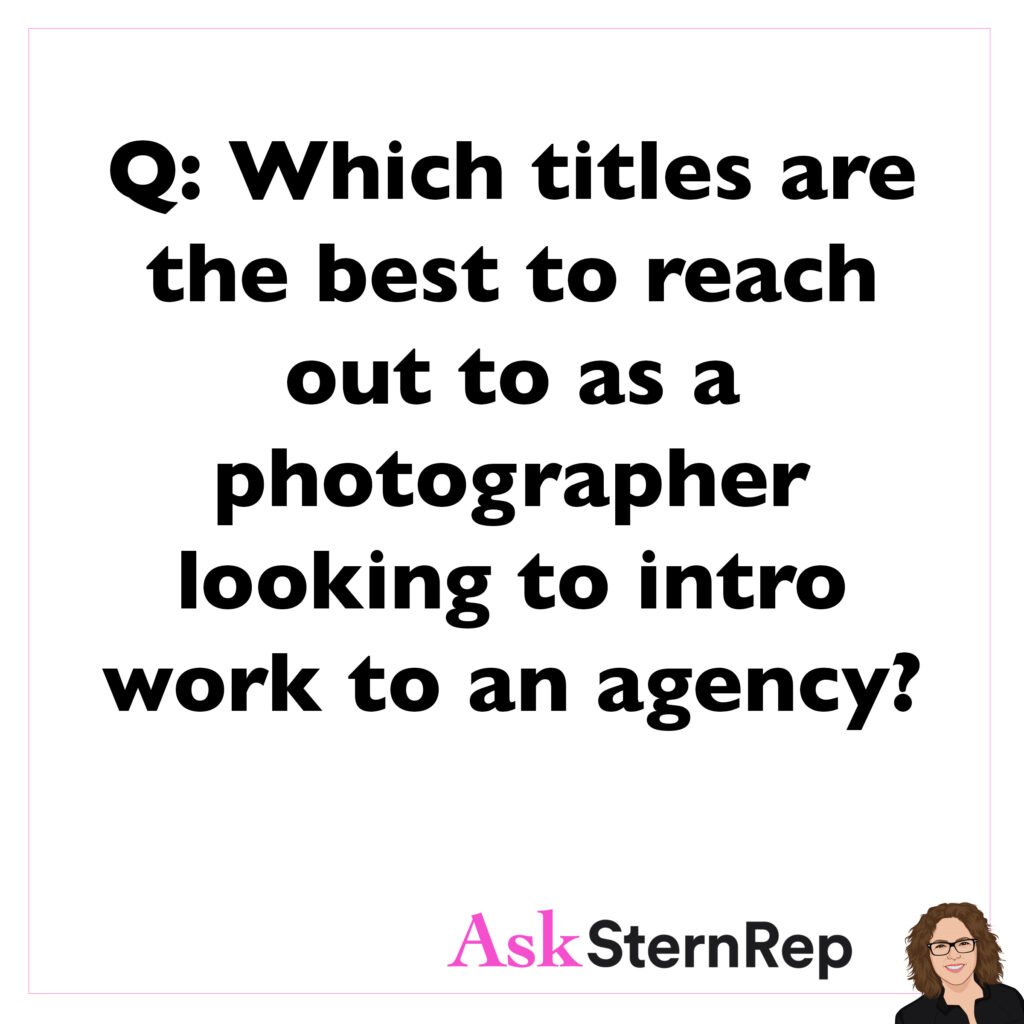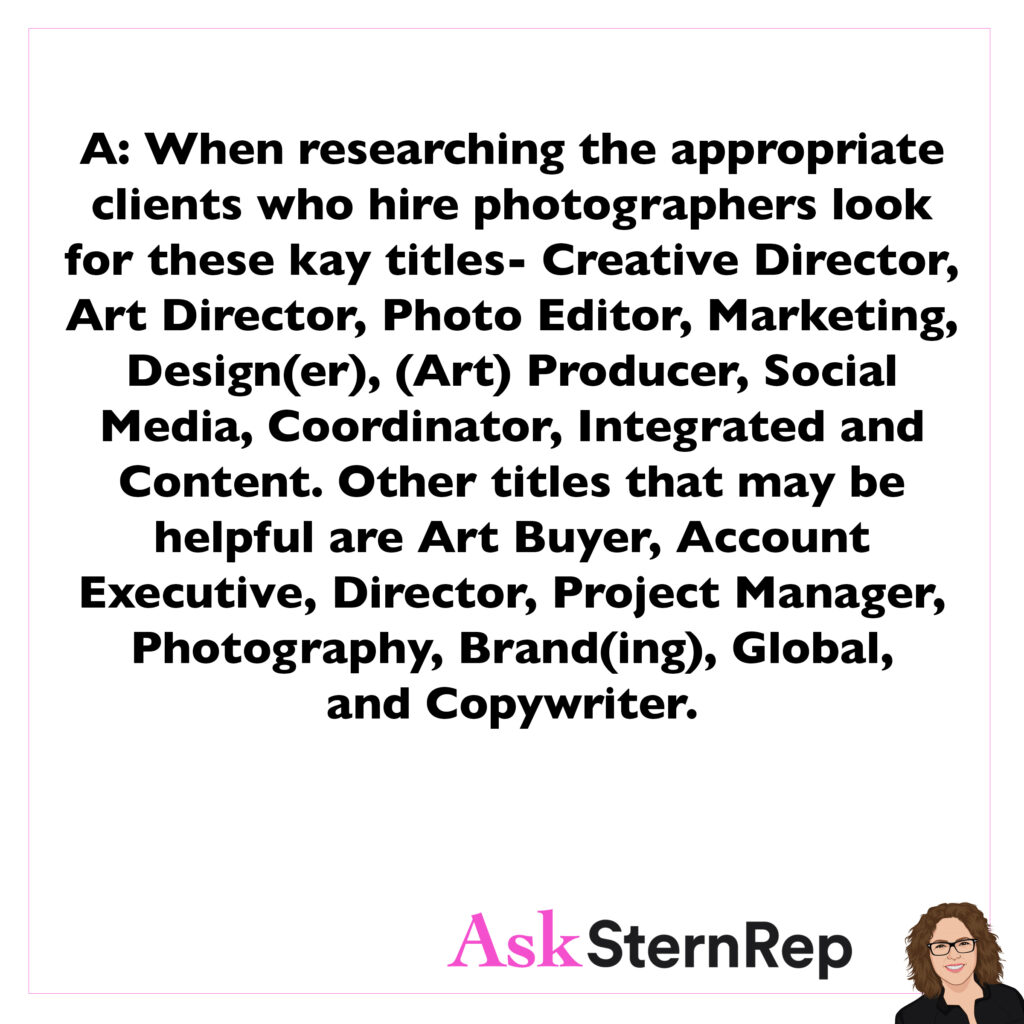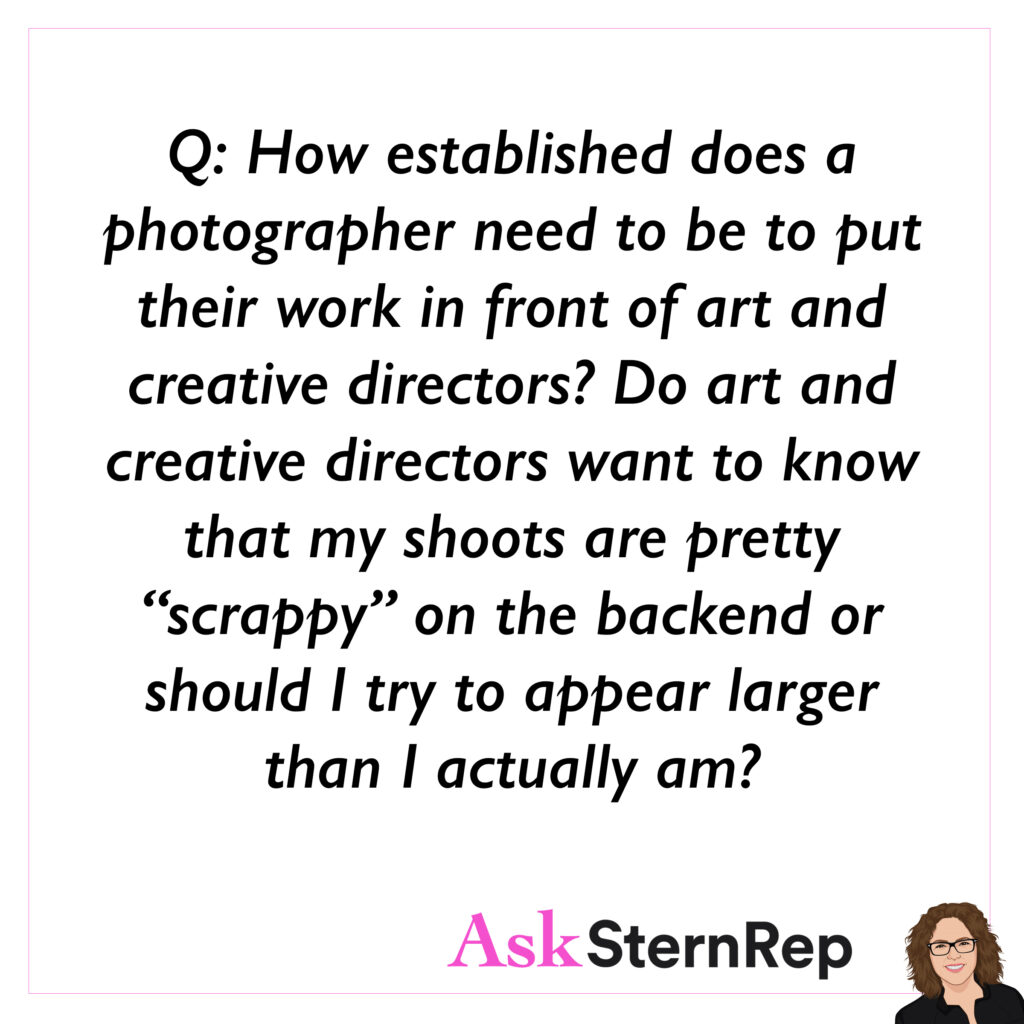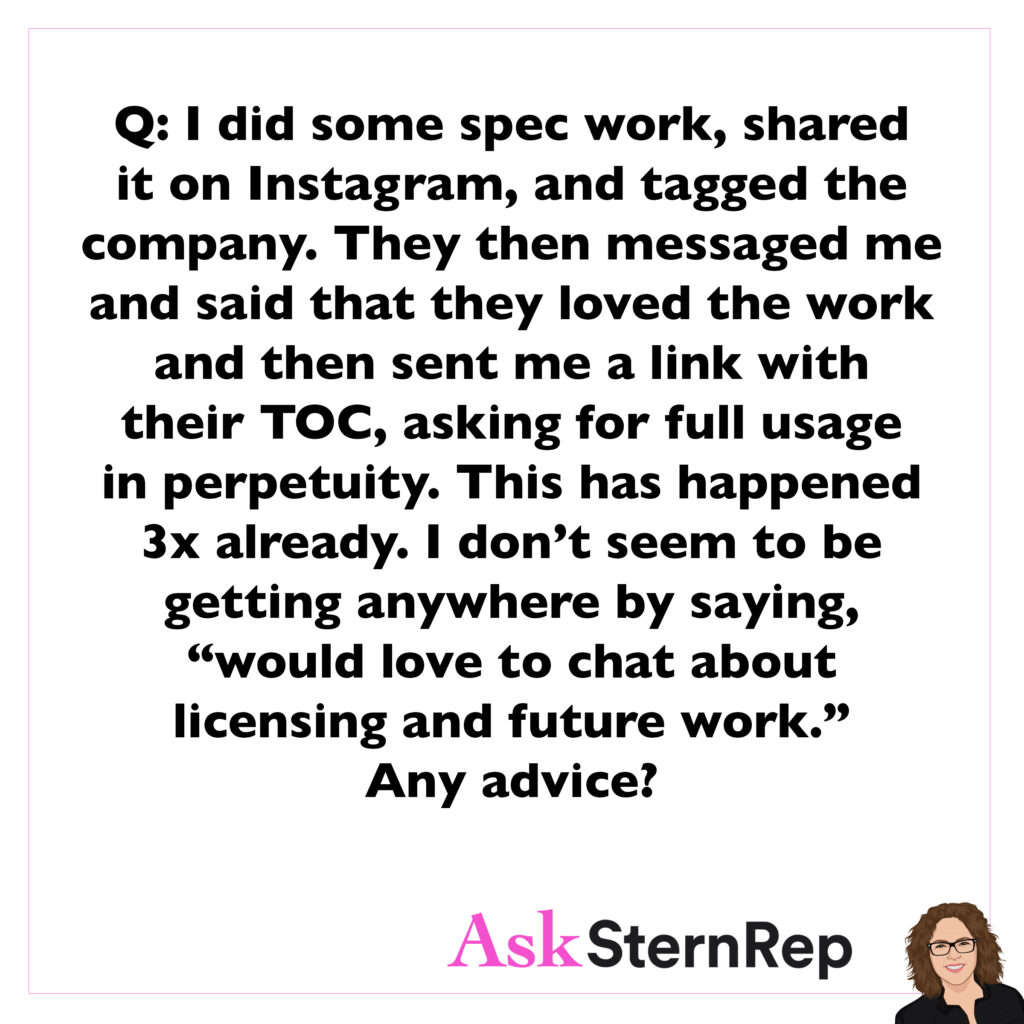
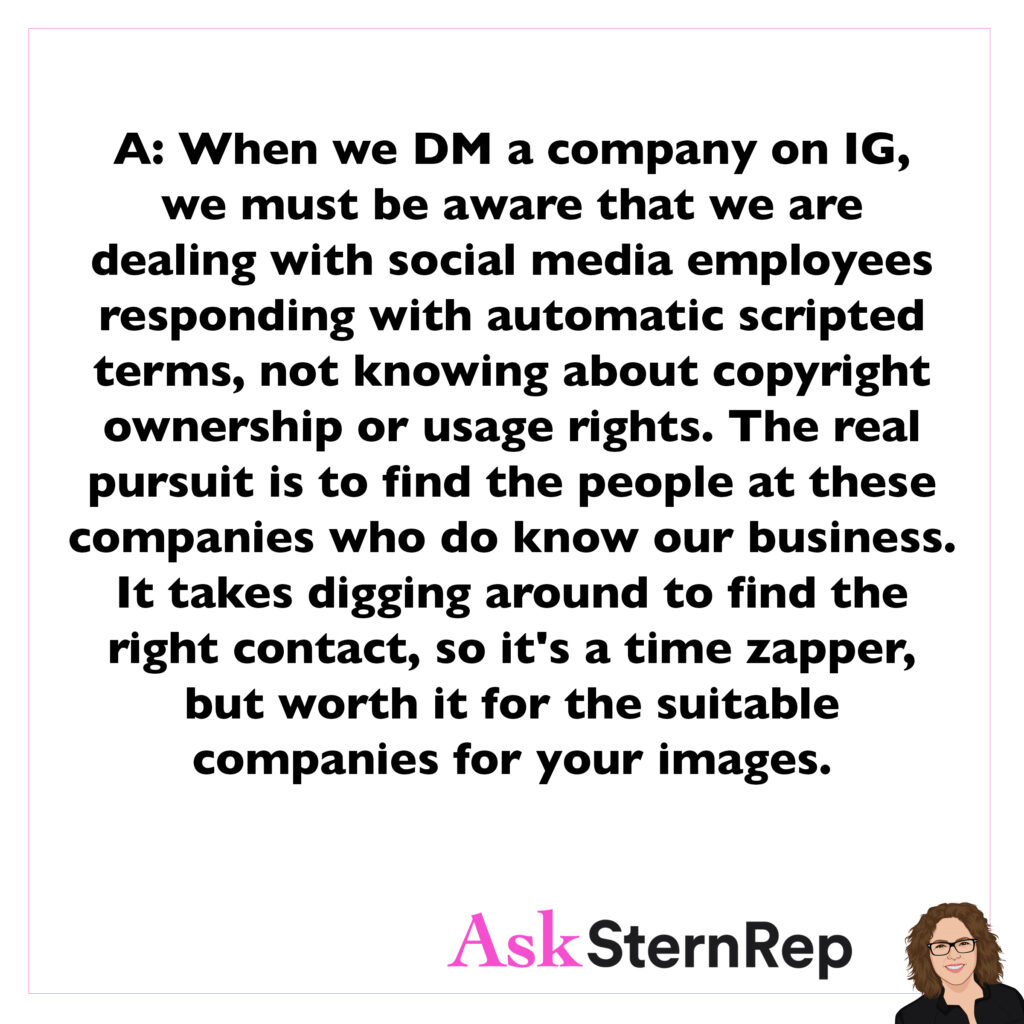
Q:
I did some spec work, shared it on Instagram, and tagged the company. They then messaged me and said that they loved the work and then sent me a link with their TOC, asking for full usage in perpetuity. This has happened 3x already. I don’t seem to be getting anywhere by saying, “I would love to chat about licensing and future work.” Any advice?
A:
When we DM a company on IG, we must be aware that we are dealing with social media employees responding with automatic scripted terms, not knowing about copyright ownership or usage rights. The real pursuit is to find the people at these companies who do know our business. It takes digging around to find the right contact, so it’s a time zapper, but worth it for the suitable companies for your images.
